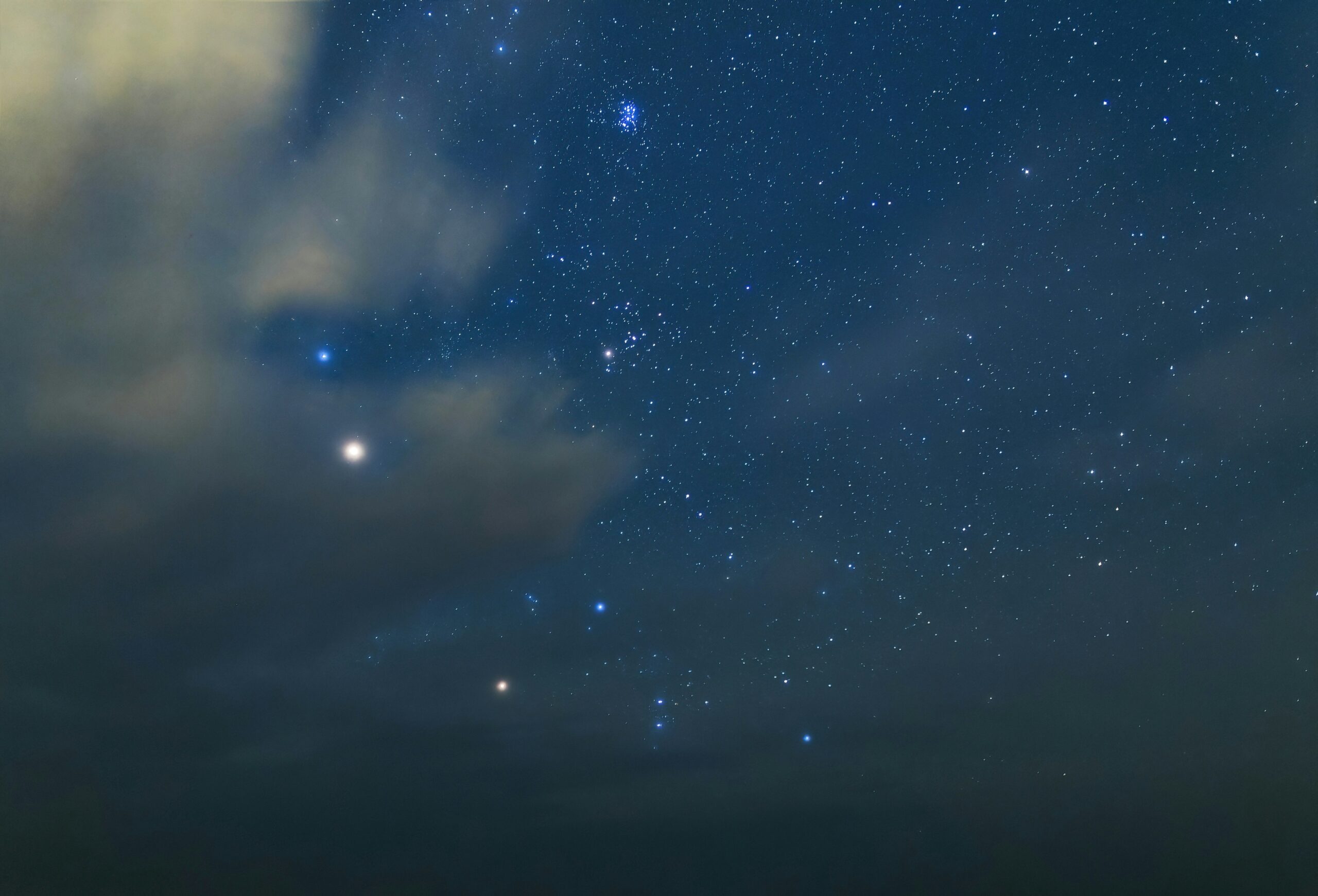Table of Contents
- 1 Understanding Binoculars for Stargazing
- 1.1 Optical Quality and System
- 1.2 Roof vs Porro Prism Designs
- 1.3 Magnification and Objective Lens
- 1.4 Specialised Features for Astronomy
- 1.5 Light Transmission and Image Brightness
- 1.6 Comfort and Eye Relief
- 1.7 Accessories for Binoculars
- 1.8 Binocular Maintenance Tips
- 1.9 Advancements in Binocular Technology
- 2 Choosing the Best Binoculars for Stargazing
- 3 Exploring the Night Sky with Binoculars
- 4 Enhancing Your Stargazing Experience
- 5 Accessories and Upkeep
- 6 Advancements and Innovations in Astronomy Binoculars
- 7 Beyond the Basics: Advanced Stargazing Tips
- 8 Frequently Asked Questions
Stargazing is a fascinating hobby that allows you to explore the wonders of the night sky. One of the best ways to enhance your experience is by using the right equipment, and binoculars specifically designed for astronomy can make a world of difference. Not only do they provide better visibility of celestial objects, but they can also be less cumbersome and more affordable than a telescope, particularly for beginners.
Understanding what makes a good pair of binoculars for stargazing is essential as you start your journey into the world of astronomy. Factors such as magnification, aperture size, and ease of use all come into play when choosing your ideal pair. An investment in quality astronomy binoculars will allow you to enjoy many captivating nights under the stars, unveiling the hidden beauty of distant galaxies, star clusters, and other celestial wonders.
Understanding Binoculars for Stargazing

Optical Quality and System
When looking for astronomy binoculars, the optical quality is of utmost importance. Your binoculars should have multi-coated lenses or, ideally, fully multi-coated optics to ensure good light transmission and minimise distortion. High-quality optics make a difference when observing stars, galaxies, and other celestial objects.
Roof vs Porro Prism Designs

Binoculars come in two main prism designs: roof prism and Porro prism binoculars. While roof prisms are sleeker and more durable, Porro prisms tend to provide a wider field of view and better depth perception, which can be advantageous in binocular astronomy.
Magnification and Objective Lens
The magnification and objective lens diameter play a significant role in the performance of binoculars for stargazing. High magnification is essential, but a large objective lens is equally important. Larger objective lenses allow more light to enter, resulting in a brighter image, which is crucial for observing dim celestial objects.
Specialised Features for Astronomy
Some specialised features, such as image stabilized binoculars or tripod mounts, can greatly enhance your stargazing experience. Image stabilization helps you achieve a steady view without constantly readjusting your binoculars, while a tripod mount allows for hands-free use, reducing fatigue and providing prolonged observation sessions.

Light Transmission and Image Brightness
Light transmission is a critical factor for astronomy binoculars, as it determines the brightness and clarity of the image. Fully multi-coated optics maximise light transmission, resulting in a brighter, clearer image of the night sky. This is essential when observing faint celestial objects.
Comfort and Eye Relief
Comfort is an important consideration, especially for prolonged stargazing sessions. Binoculars with a good eye relief are ideal if you wear glasses, as they allow for a comfortable viewing distance between the eyepiece and your eye. Look for binoculars with twist-up eye cups, which can be adjusted for maximum comfort.
Accessories for Binoculars
Helpful accessories can enhance your binocular astronomy experience. A comfy neck strap is essential for carrying your binoculars; lens covers and objective lens caps protect your optics from dust and debris. Do not forget a binoculars stand or tripod for stable, hands-free observing.
Binocular Maintenance Tips
Proper care and maintenance are essential to prolong the life of your binoculars. Always store your astronomy binoculars in a protective case, and use a lens cloth or brush for cleaning the optics. Ensure that the lens caps are in place when not in use to prevent dust and dirt from entering the binoculars.
Advancements in Binocular Technology
Modern binoculars are continually evolving to offer enhanced performance and features. Innovations such as image stabilization, high-quality optics, and ergonomic designs have made it easier than ever to explore the wonders of the night sky with astronomy binoculars. Stay informed about the latest advances in binocular technology to make the most of your stargazing experience.
Choosing the Best Binoculars for Stargazing
Considerations for Glass Wearers
If you wear glasses, eye relief is an essential factor when choosing the best binoculars for stargazing. It refers to the distance between the eyepiece lenses and your eyes when the image is in focus. Binoculars with longer eye relief are more comfortable for eyeglass wearers, typically around 14mm or more.
Analyzing Binocular Reviews
Reviews are a great way to identify good quality binoculars for astronomy. You’ll want to look for reviews that mention clarity, brightness, and ease of use in dark conditions. Be sure to check multiple sources to get a balanced perspective, such as BBC Sky at Night and Popular Science.
Budget-Friendly Options
It’s possible to find binoculars suitable for stargazing without breaking the bank. Brands like Celestron offer budget-friendly options that can provide good quality optics. Keep an eye open for sales and deals to get the most value for your money.
Lightweight vs. Giant Binoculars
When choosing between lightweight and giant binoculars, consider how and where you’ll be using them. Lightweight binoculars are convenient for portable use and handheld stargazing, while giant binoculars offer better image stability and light-gathering capacity. Remember, the larger the binoculars, the more cumbersome they can be to carry around and use.
Stargazing Binoculars vs. Regular Binoculars
Not all binoculars are optimal for stargazing. Binoculars an astronomers typically have larger objective lenses, allowing them to gather more light and offer better image quality of celestial objects. Regular binoculars may not provide enough light-gathering ability for clear and detailed stargazing experiences.
In summary, when selecting the best binoculars for astronomy, consider your needs and preferences regarding eyeglass wearing, binocular reviews, price range, portability, and intended use. Make sure to choose a pair that offers good quality optics to enhance your stargazing experience.
Exploring the Night Sky with Binoculars
Observing Deep Sky Objects

When stargazing, you can use astronomy binoculars to observe large deep sky objects with ease. A pair of binoculars with fully multi coated lenses delivers bright, clear images with high contrast to help you discover fascinating galaxies, nebulas, and other celestial objects. For instance, celestial wonders like the Andromeda Galaxy or the Orion Nebula will reveal themselves to you in stunning detail through your binoculars.
Viewing Bright Celestial Objects
Your astronomy binoculars can also enhance your experience of viewing bright objects in the night sky. Exploring the Moon’s surface and appreciating the brilliance of Jupiter’s largest moons becomes an extraordinary experience. While these bright objects are visible to the naked eye, the enhanced detail offered by binoculars for astronomy makes observing them even more thrilling.
Experiencing Wide Field of View
A wide field of view (FOV) is a crucial aspect of viewing night sky objects. It allows you to take in larger areas in one glance and makes it easier to scan the sky to discover new objects. Binoculars typically provide a significantly wider field of view compared to a telescope. This wider FOV helps you better appreciate the stunning expanses of celestial landscapes and serendipitously stumble upon smaller deep sky objects that might otherwise elude you.
Finding and Identifying Star Clusters

Binoculars excel at finding and identifying various star clusters. Open clusters, like the Pleiades, and globular clusters, such as the Hercules Cluster, can be challenging to observe with the naked eye. Yet, with your astronomy binoculars, you can spot them clearly, making it simpler to locate these magnificent collections of stars in the night sky.
In summary, using binoculars designed for astronomy will enrich your stargazing experience. Deep sky objects, bright celestial objects, and star clusters all become more detailed and captivating. The wide field of view offered by binoculars makes navigating and discovering the night sky even more enjoyable and rewarding. So, equip yourself with a quality pair of binoculars and start exploring the wonders of the universe.
Enhancing Your Stargazing Experience

Using a Tripod for Stability
Investing in high-quality optics, such as binoculars with fully multi-coated or multi-coated optics, is essential for obtaining clearer images of celestial objects. To enjoy an even more stable view of the night sky, attach your binoculars to a tripod. Many binoculars come with built-in tripod adapters, making it easy to create a stable platform for extended observations.
Maximising Comfort during Long Sessions
For lengthy stargazing sessions, it’s vital to stay comfortable. Find a chair that supports your back and neck, allowing you to observe without straining your muscles. Additionally, ensure you have a suitable eyepiece lens to limit eye strain and maximise image clarity. Investing in a quality tripod will further alleviate any discomfort during extended periods of observation.
Recommendations for Amateur Astronomers
For amateur astronomers, it’s essential to start with binoculars that enhance your experience without overwhelming you. Celestron SkyMaster 25×70 is an excellent choice for beginners, offering great magnification and clear images. Another option is Nikon Aculon A211 10×42, which provides impressive performance with beginner-friendly usability.
Comparison: Handheld vs. Observation Binoculars
When selecting binoculars, you will encounter two main types: handheld binoculars and observation binoculars. Here’s a brief comparison for your consideration:
- Handheld Binoculars: Lightweight, portable, and easy to use, these binoculars are ideal for casual stargazing or terrestrial observations. However, they may lack the necessary magnification for viewing distant objects.
- Observation Binoculars: These larger, more powerful binoculars provide greater magnification and image clarity, allowing you to observe various celestial objects in detail. While they can be heavier and require a tripod for stability, observation binoculars offer a more immersive experience for dedicated stargazers.
In summary, enhancing your stargazing experience depends on the right combination of binoculars, accessories, and personal comfort. Consider your stargazing goals, budget, and preferences when selecting the tools that will elevate your time spent exploring the night sky.
Accessories and Upkeep
Protecting Your Binoculars with Proper Covers
To ensure your binoculars stay in good condition, it’s essential to protect them with the right covers. High-quality lens covers for both the objective lens and the eyepiece are vital to keep the optical system safe from dust, debris, and potential scratches. Make sure to choose covers that fit snugly and are made of durable materials. A good set will include objective lens caps and eyepiece caps to shield every part of the optical system.
Selecting the Right Neck Strap and Adapters
When you’re out stargazing, it’s important to have a comfortable and secure way to carry your binoculars. A well-padded neck strap can make it easier to have your binoculars at hand, as well as reduce strain on your neck and shoulders during long observation sessions. Pick a strap that’s adjustable, sturdy, and evenly distributes the weight of your binoculars.
Some binoculars come with a built-in tripod adapter, allowing for hands-free observation. Having this feature can be particularly useful for high-powered binoculars with larger exit pupils, as it helps to stabilise the view and reduce shakiness. If your binoculars don’t have a built-in adapter, consider investing in a separate one that’s compatible with your model.
Maintaining Optics for Sustained Quality
Taking care of your binoculars’ optical system is essential for maintaining the best performance and ensuring that you can enjoy clear, sharp views of the night sky:
- Cleaning: Regularly clean the lenses using a soft, lint-free cloth or a lens pen designed specifically for optics. Avoid using harsh chemicals or rough materials that could damage the lens coatings.
- Storage: When not in use, store your binoculars in a protective case or pouch to keep them safe from dust, moisture, and potential knocks or bumps.
- Avoid extreme temperatures: Prolonged exposure to extreme heat or cold can affect the performance of your binoculars’ good quality optics. When possible, keep them at moderate, consistent temperatures.
By taking these steps, you can keep your binoculars in excellent condition for many years of enjoyable stargazing.
Advancements and Innovations in Astronomy Binoculars

Emerging Trends in Optical Technology
With advancements in technology, astronomy binoculars have come a long way in recent years. One significant trend is the use of multi-coated lenses and multi-coated optics. These coatings reduce reflections and increase light transmission, allowing for sharper images with higher contrast and accurate colours. This innovation helps lessen chromatic aberration, ensuring you enjoy true-to-life views of celestial objects.
Another trend is improved objective lens size. Larger objective lenses result in more powerful binoculars capable of providing brighter images with greater detail. By enhancing the overall optical system, you’ll experience impressive image quality during your stargazing sessions.
Next-Generation Image Stabilisation Features
A steady view is crucial for stargazing, and image stabilisation technology is making this more achievable than ever. With features like Canon’s 10×42 L IS WP, image stabilisation systems allow you to view celestial objects with more stable, jitter-free images, making manual stabilisation unnecessary. This makes observing far-off objects such as planets and distant galaxies an enjoyable and immersive experience.
Improvements in Light-Gathering Capability
In astronomy, the ability to gather light is essential for viewing faint celestial objects. Binoculars with excellent light transmission capabilities enable you to observe more details with a brighter image. Innovations in binocular design focus on maximising the amount of light that enters the optical system, allowing for clearer, more vibrant views of the night sky.
Here are some noteworthy improvements in light-gathering capability:
- Large objective lenses for increased light intake
- Advanced coatings on binocular surfaces for minimal light loss
- Enhanced prism designs for better light transmission
By harnessing these advancements, your stargazing sessions will become more awe-inspiring and enjoyable, revealing the wonders of our universe in a whole new light.
Beyond the Basics: Advanced Stargazing Tips

When it comes to stargazing, there’s always room for improvement. By optimising your setup and leveraging accessories, you can enhance your observations and make the most of your binoculars. In this section, we will explore some advanced tips to help you get the best possible experience.
Optimising Setup for Superior Viewing
Choose the right type of binoculars: To get the most from your stargazing experience, it’s important to select the right type of binoculars. Roof prism binoculars tend to be more compact and lightweight, whereas Porro prism binoculars have a wider field of view. For the best results, look for high quality optics, such as those found in Celestron SkyMaster 20×80 or Canon 10×42 L IS WP
Objective lenses: Larger objective lenses allow more light to enter the binoculars, resulting in a brighter image. Opt for binoculars with objective lenses of at least 42mm, such as the Nikon PROSTAFF P7 10×42
Tripod use: Many good quality binoculars, such as the Celestron SkyMaster 25X100 come with built-in tripod adapters, making it easy to mount them for stable viewing.
Leveraging Accessories for Enhanced Observations
- Weather protection: Choosing WP (waterproof) binoculars, like the Canon 10×42 L IS WP, will ensure you’re never caught out by unexpected weather changes. This also means that these binoculars will be more durable, as they’re designed to withstand the elements.
- Filters: Attaching filters to your binoculars can help improve contrast and reduce glare when observing specific celestial objects. For example, lunar filters can enhance your view of the Moon, while deep-sky filters can make it easier to locate and observe faint nebulae and galaxies.
- Finders: A red dot or magnifying finder can make it easier to locate and track celestial objects when paired with your binoculars.
- Cleaning supplies: Keep your binoculars clean and free from dust and smudges with a microfibre cloth, lens cleaning solution, and an air blower or brush.
By taking these advanced stargazing tips into consideration, you’ll significantly improve your observations and make the most of your binoculars. Whether you’re a seasoned observer or just starting out, these tips will help you get the most out of your stargazing experience.
Frequently Asked Questions
When looking for binoculars that are suitable for both stargazing and bird watching, focus on a few key features: a relatively low magnification (around 7x to 10x), a larger objective lens diameter (30mm to 50mm), a wide field of view, and good eye relief. These features will provide a balance between ease of use, portability, and brightness for observing both celestial objects and wildlife. Additionally, it’s important to consider the overall build quality and whether the binoculars are waterproof and fog proof.
For stargazing beginners, binoculars with a magnification of 7x to 10x and an objective lens diameter between 40mm and 50mm are recommended. This combination provides a bright, clear image, which makes it easier to see celestial objects. Additionally, these specifications should be easy to handle and hold steady without the need for a tripod.
Some affordable binocular options suitable for stargazing include Celestron Cometron 7×50 as well as the Nikon Action 10×50 EX. These models offer good optical performance, are lightweight, and provide a comfortable viewing experience for a reasonable price.
Astronomy binoculars typically have larger objective lenses, providing brighter images in low-light conditions, and may have higher magnification than those used for wildlife viewing or hunting. Binoculars for wildlife viewing or hunting often have a wider field of view, faster focusing, and may prioritize rugged construction, waterproofing, and fog proofing.
15×70 binoculars are a popular choice for astronomy because they offer a higher level of magnification and a larger objective lens diameter. The 15x magnification can reveal more details in celestial objects, while the 70mm objective lenses capture more light, resulting in brighter images. However, keep in mind that these specifications may require a tripod to stabilize the view and can be bulkier and heavier than lower magnification binoculars.
For most users, particularly beginners, 10×50 binoculars are more suitable for clear night sky observations. While 20×50 binoculars offer a higher level of magnification, they also have a narrower field of view and may require a tripod for stabilization due to the increased sensitivity to hand movement. The 10×50 binoculars provide a good balance between magnification, field of view, and image brightness, making them an excellent choice for stargazing.





